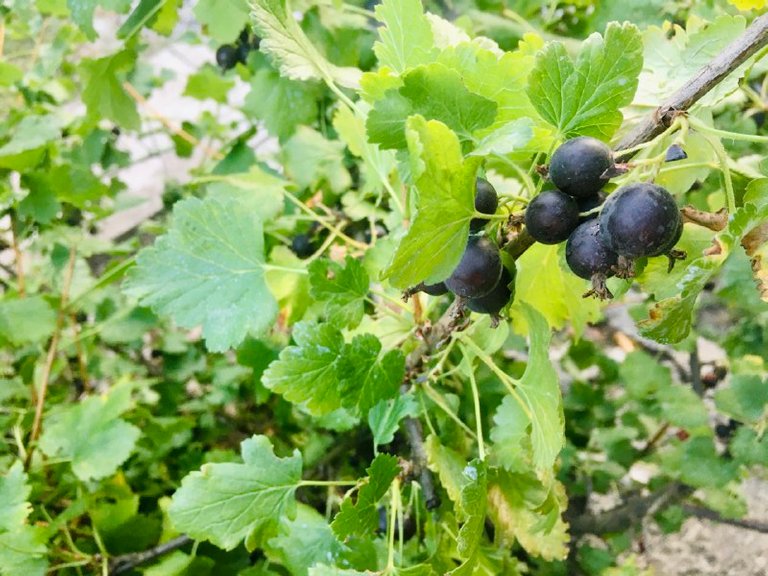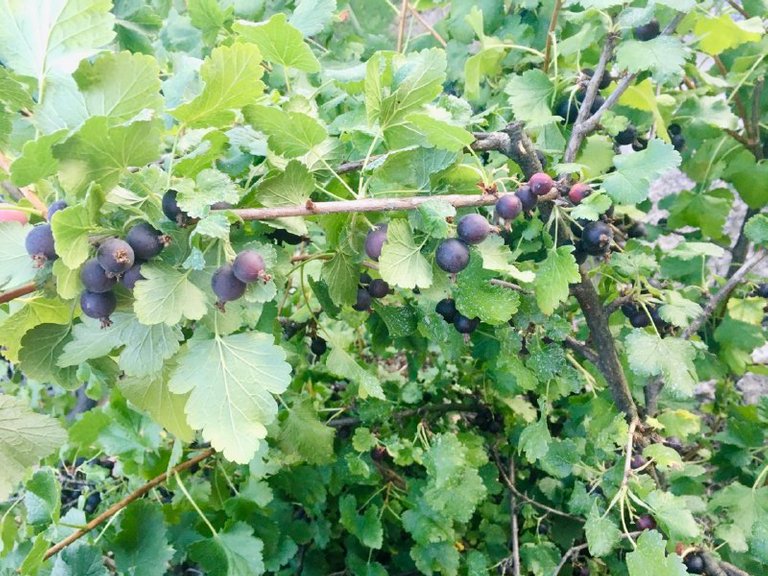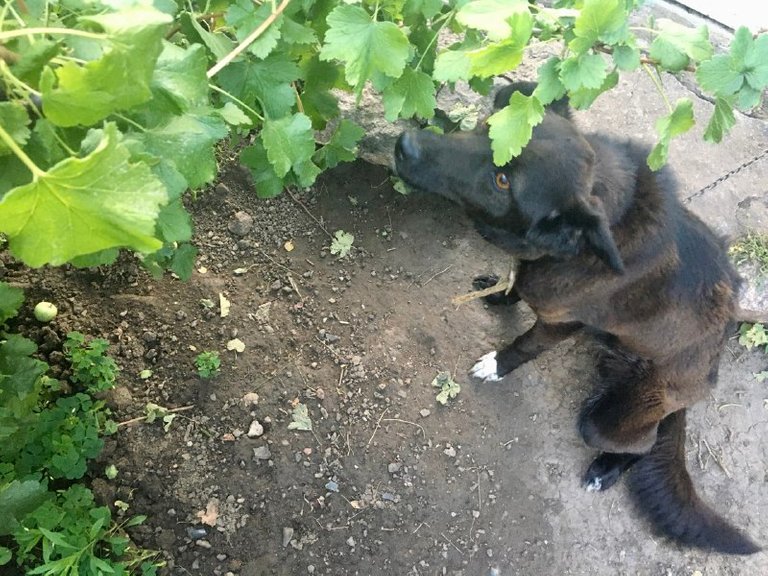My Jostaberry: harvest soon
Hello! Yoshta berries are already ripening in my garden. Interesting word, yoshta! I know that not even everyone knows it. But this is not surprising, because this culture is not as popular as gooseberries and currants. Although, in fact, Jostaberry is a hybrid of these two plants. And she was bred by the German breeder R. Bauer about half a century ago. True, other varieties were later bred by American, Hungarian and Swedish breeders. You will find all this in Wikipedia and other sources, and we will return to my Jostaberry.
The bush is still big. It has grown to about one and a half meters in width. And the height is the same. Although they say that it can be over two meters. I cut off the old branches, because they hardly give birth, but only draw juices from new branches. And it grows quite quickly.
Jostaberry does not have thorns that bother gooseberry lovers. She is extremely undemanding, she is not afraid even of severe frosts. If the currant and gooseberry bushes freeze, then this plant is very resistant. It is not the first year that I have been watching her for pests, but there are no recent ones. The leaves are green, the branches do not dry: in general, everything is fine. Although this year I treated the plant with copper sulfate, since there was nowhere to use the ready-made mixture. In general, you can safely do without spraying, as well as without applying fertilizers.
Lately I have been harvesting from Jostaberry every year! I repeat, without fertilizers and almost without care. All care is the removal of old branches. They say that the plant also has no problems with reproduction. It is enough to cut off a branch in winter and plant it in a pot, and in autumn to transplant it into the soil. By the way, yoshta is used not only for growing berries, but also in landscape design.
About berries. The harvest is striking. My bush gives about one bucket of berries. The taste of berries is specific. There are many varieties of gooseberries and currants, and they all differ quite significantly. So, yoshta is something between a gooseberry and a currant. The berries are sour, as for me. Therefore, too much sugar is needed to make jam. As a rule, we use yoshta berries for compote, sometimes to make sour cakes, and more often we just eat them. I believe that yoshta is a berry for an amateur. In no case will it be able to replace the sweet gooseberry or the characteristic taste of currants or currants.
And also, as it turned out, my faithful dog really likes Jostaberry. At first I threw him a few berries, then more... And yesterday I happened to see that the lover of fruits and berries had already "cut off" all the branches adjacent to his territory. This is not scary, because there are enough berries for everyone. Let him eat sour food. In the photo, by the way, my faithful friend looks with a sad look at the branches of Jostaberry in search of berries.
All good!
Моя йошта: скоро збирати врожай

Привіт! Вже достигають в моєму саду ягоди йошти. Цікаве слово, йошта! Знаю, що навіть не всім воно відоме. Та це й не дивно, адже ця культура не така популярна, як аґрус і смородина. Хоча насправді йошта є саме гібридом цих двох рослин. А виведена вона була німецьким селекціонером Р. Бауером близько півстоліття тому. Правда, пізніше були виведені й інші сорти американськими, угорськими та шведськими селекціонерами. Все це ви знайдете у Вікіпедії та інших джерелах, а ми повернемося до моєї йошти.
Кущ йошти великий. В мене він розрісся десь на півтора метра в ширину. Та й висота така ж. Хоча кажуть, що буває й понад два метри. Старі гілки я відрізаю, адже вони майже не родять, а лише тягнуть соки з нових гілок. А розростається вона досить швидко.

Йошта не має колючок, які дошкуляють любителям аґрусу. Вона надзвичайно невибаглива, не боїться навіть сильних морозів. Якщо кущі смородини й аґрусу підмерзають, то ця рослина дуже стійка. Вже не перший рік спостерігаю за нею на предмет шкідників, але останніх немає. Листки зелені, гілки не сохнуть: загалом все добре. Хоча в цьому році я обробив рослину мідним купоросом, оскільки не було куди використати вже готову суміш. Взагалі можна сміливо обійтися без оприскування, як і без внесення добрив.
Врожай з йошти збираю останнім часом щорічно! Повторю, без добрив та майже без догляду. Весь догляд — це видалення старих гілок. Кажуть, що з розмноженням рослини теж не має ніяких проблем. Достатньо взимку відрізати гілку й висадити її в горщик, а восени пересадити в ґрунт. До речі, йошту використовують не лише для вирощування ягід, а й у ландшафтному дизайні.

Про ягоди. Врожай з йошти разючий. Мій кущ дає приблизно одне відро ягід. Смак ягід специфічний. Існує багато сортів аґрусу й смородини й всі вони досить суттєво відрізняються. Так ось, йошта — це щось середнє між аґрусом і смородиною. Ягоди кислі, як на мене. Тому для приготування варення потрібно забагато цукру. Як правило, ягоди йошти використовуємо для компоту, іноді приготування кисленьких пиріжків, а частіше — просто їмо. Вважаю, що йошта — це ягода на любителя. Вона ні в якому разі не зможе замінити солоденький аґрус або ж характерний смак порічки чи смородини.

А ще, як виявилося, йошту дуже полюбляє мій вірний пес. Спочатку я кинув йому кілька ягід, потім ще... А вчора випадково побачив, що любитель фруктів та ягід вже “обірвав” всі прилеглі до його території гілки. Це не страшно, адже ягід вистачить всім. Хай їсть кисленьку йошту. На світлині, до речі, мій вірний друг з сумним поглядом дивиться на гілки йошти в пошуках ягід.
Всім добра!
Text and photo content are the property of the author, unless otherwise noted. Publications and photos are not published on other social media.
Doggy :)!
It looks very eco-stylish and cool for making good stuff :)
Slava Ukraini :)!
Героям Слава!